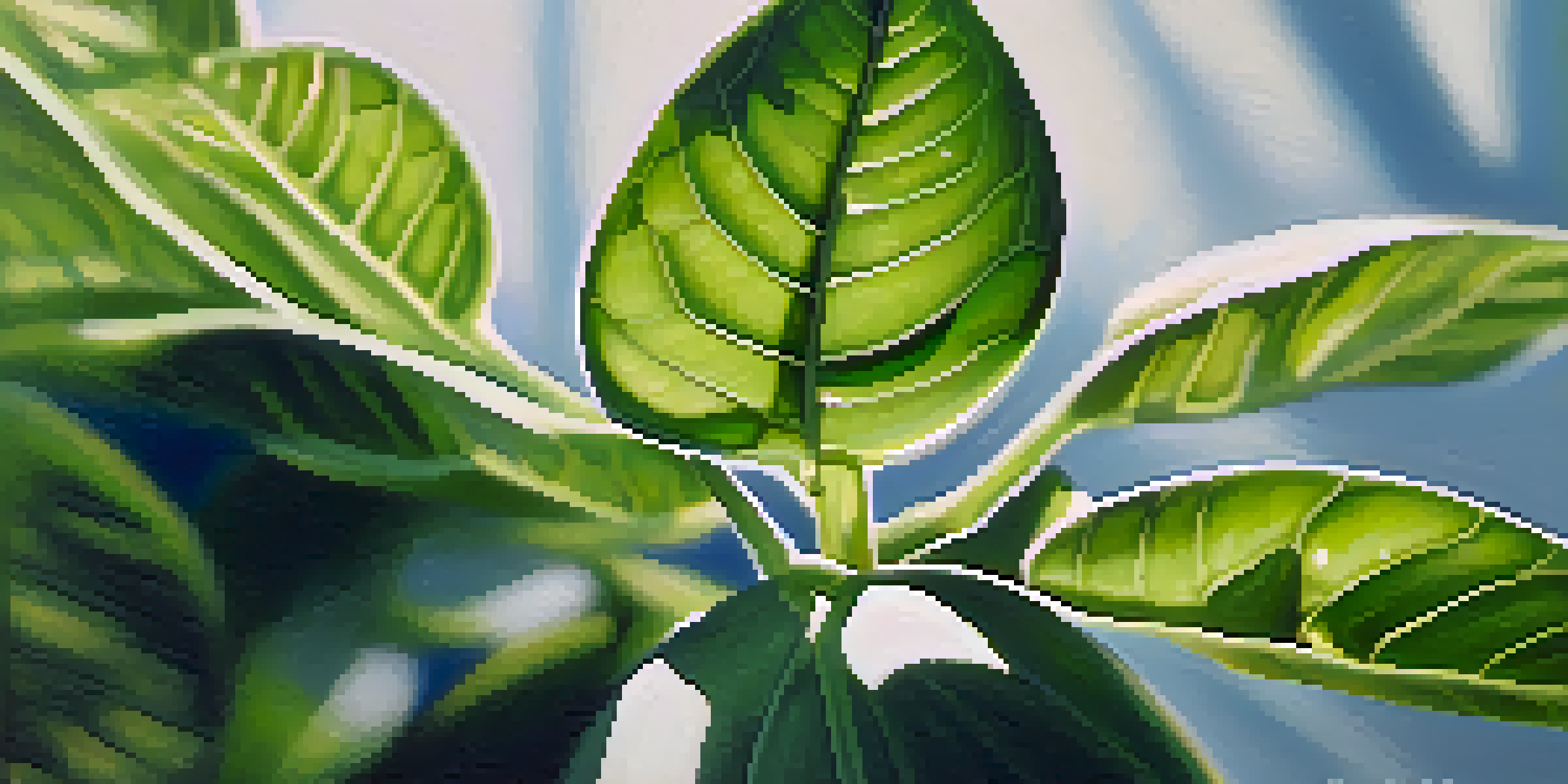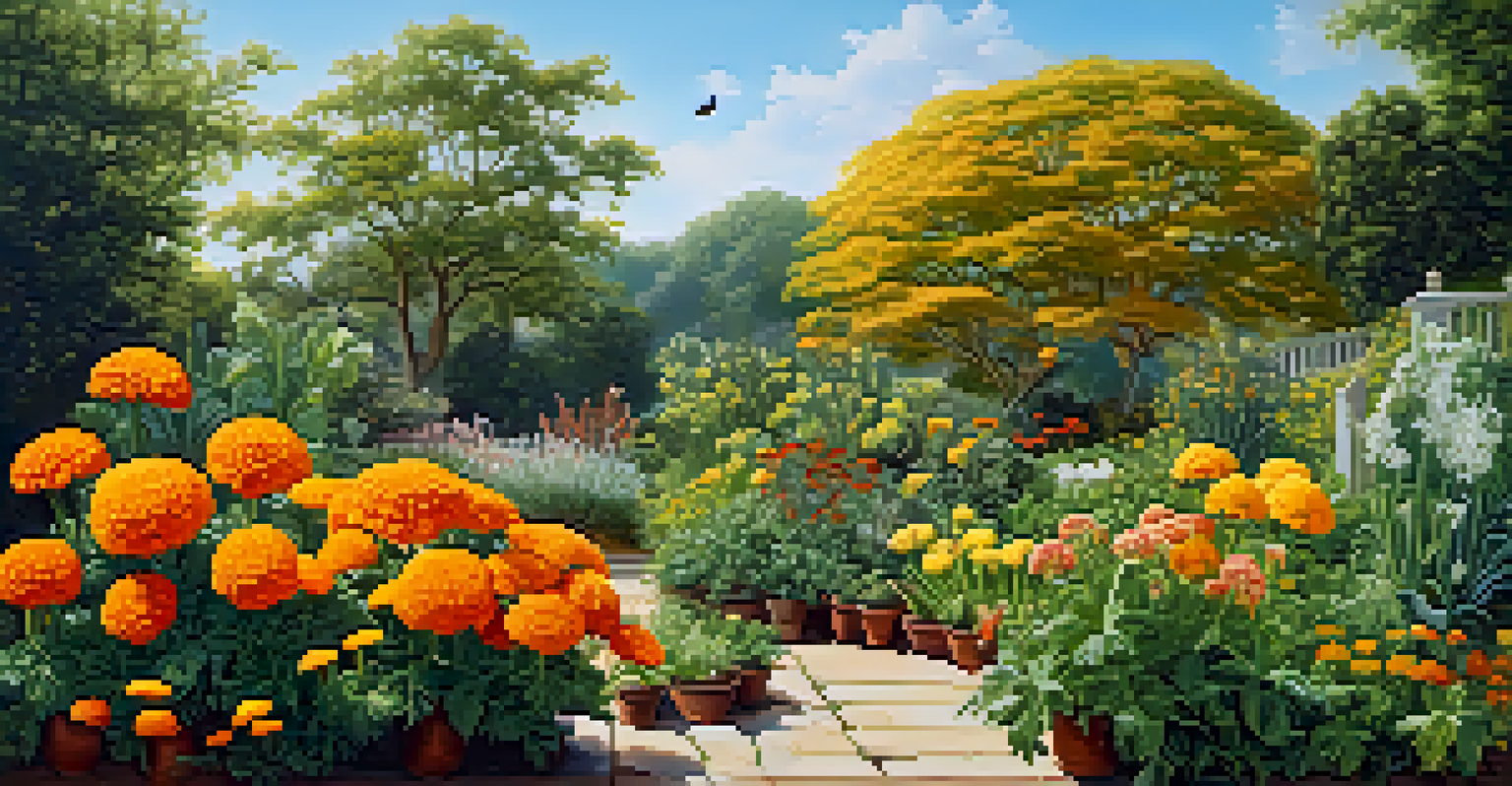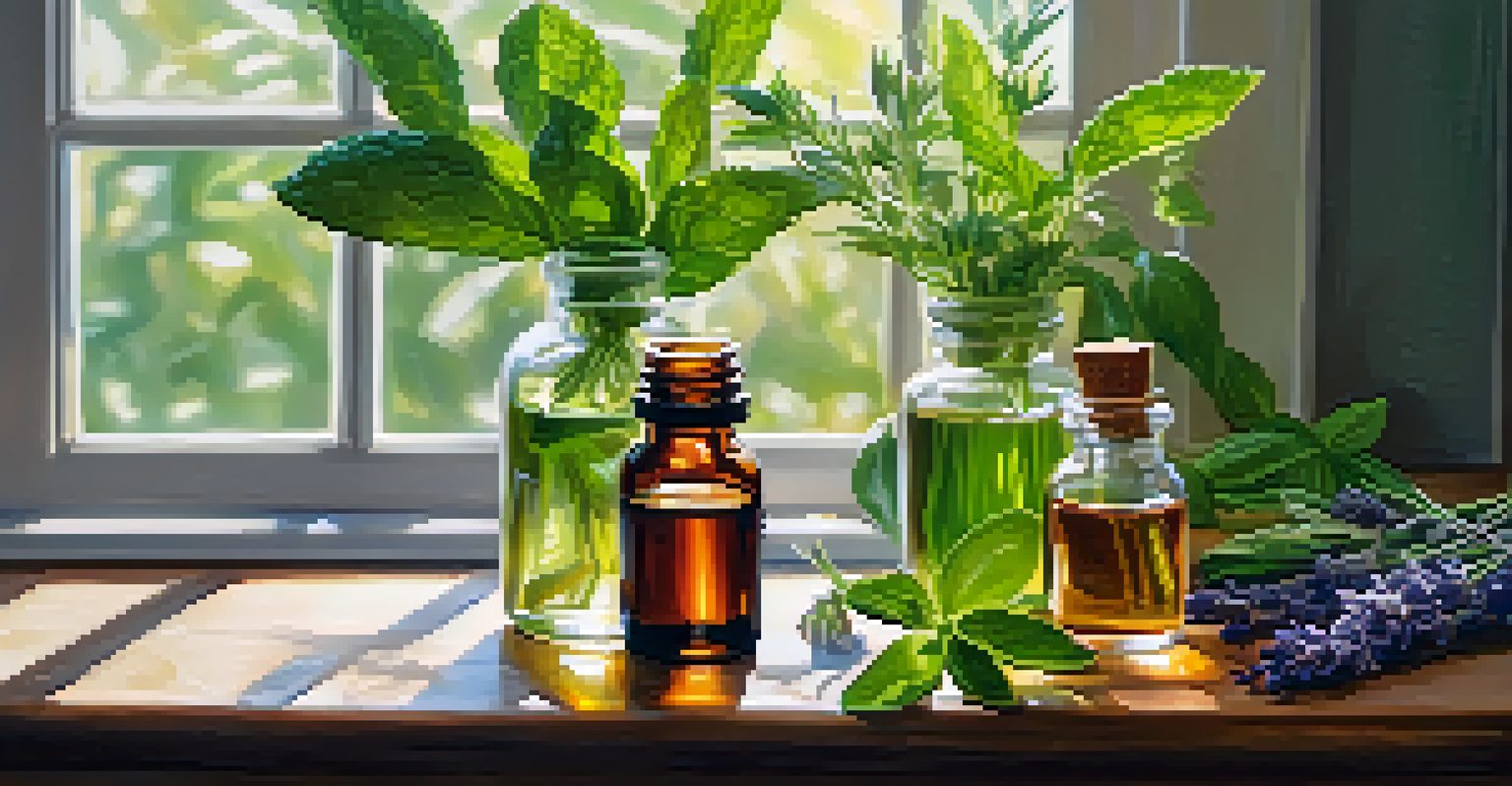Pest Infestation in Plants: Symptoms and Natural Solutions

Understanding Common Pest Types in Plants
Pests come in all shapes and sizes, and understanding them is key to protecting your plants. Common pests include aphids, spider mites, and whiteflies, each with unique behaviors and preferences. For instance, aphids tend to cluster on new growth, while spider mites often leave fine webbing on leaves. Knowing what you're up against can help you devise effective strategies to combat them.
The best way to control pests is to understand them first.
Identifying the type of pest is crucial because it affects the approach you take for control. Some pests are more destructive than others, and their feeding habits can lead to significant damage. For example, while aphids suck sap from plants, leading to wilting, spider mites can cause yellowing and stippling of leaves. This knowledge helps prioritize which pests need immediate attention.
Additionally, being aware of the life cycles of these pests can help in timing your interventions. Many pests have specific seasons when they are most active, so understanding their patterns can lead to more successful management. For instance, targeting egg stages can drastically reduce future infestations.
Recognizing Symptoms of Pest Infestation
Symptoms of pest infestations can vary widely, but there are some telltale signs to watch for. Yellowing leaves, stunted growth, and visible pests are often the first indicators that something is amiss. If you notice leaves curling or wilting, it’s a sign that pests may be feeding on the plant’s vital fluids.

Another common symptom is the presence of sticky residue, known as honeydew, which is left behind by pests like aphids. This can attract other insects, like ants, and lead to the growth of sooty mold, which can further hinder plant health. Additionally, look for webbing or small black dots that may indicate spider mites or their eggs.
Identify Pests for Effective Control
Understanding the types of pests and their behaviors is crucial for devising effective management strategies.
It's important to act quickly when you notice these symptoms, as early intervention can often prevent more significant damage. Regularly checking your plants can help catch infestations before they escalate. A simple weekly inspection can save you a lot of time and effort in the long run.
Natural Solutions to Combat Pests
When it comes to dealing with pests, many gardeners prefer natural solutions over chemical pesticides. Introducing beneficial insects, like ladybugs or lacewings, can provide a natural form of pest control, as these insects prey on common pests. This method not only reduces the pest population but also maintains the ecological balance in your garden.
Healthy plants are less likely to attract pests and can better withstand any infestations that do occur.
Another effective natural solution is the use of homemade insecticidal soap. This can be made by mixing water with a few drops of dish soap and spraying it on infested plants. The soap suffocates soft-bodied pests without harming the plant, making it a safe and eco-friendly option.
Additionally, practicing crop rotation and companion planting can deter pests. For example, planting marigolds alongside vegetables can repel nematodes and other harmful insects. These methods not only manage pest populations but also foster a healthier garden ecosystem.
The Role of Plant Hygiene in Prevention
Keeping your plants healthy is crucial in preventing pest infestations. Regularly cleaning your garden tools and removing debris can significantly reduce the risk of pests establishing themselves. Debris can harbor pests and diseases, so a tidy garden is more resilient against infestations.
Another essential practice is to ensure proper watering and fertilization. Overwatering or nutrient deficiencies can weaken plants, making them more susceptible to pests. Healthy plants are less likely to attract pests and can better withstand any infestations that do occur.
Natural Solutions Enhance Garden Health
Utilizing natural pest control methods, such as beneficial insects and homemade insecticidal soap, helps maintain ecological balance.
Lastly, regularly inspecting new plants before introducing them to your garden can prevent pests from spreading. Quarantine new plants for a week or two to ensure they are pest-free. This simple step can save your entire garden from potential outbreaks.
Using Essential Oils for Pest Management
Essential oils have gained popularity as a natural way to deter pests in gardens. Oils like neem, peppermint, and lavender not only smell great but can also repel various insects. For instance, peppermint oil has been shown to deter ants and aphids, making it a great addition to your pest management arsenal.
To use essential oils, simply mix a few drops with water in a spray bottle and apply it to affected plants. The strong scents can mask the plants' natural odors, making them less attractive to pests. Additionally, essential oils can disrupt pest feeding and reproduction, further reducing their populations.
However, it’s important to use these oils cautiously, as they can also affect beneficial insects. Always test a small area first to ensure that the essential oil does not harm your plants. When used correctly, essential oils can be a powerful ally in keeping your garden pest-free.
Creating a Balanced Ecosystem in Your Garden
A balanced ecosystem is fundamental for pest management and can be achieved through biodiversity. Planting a variety of species not only attracts beneficial insects but also discourages pests. For example, flowering plants can provide nectar and pollen for pollinators and predatory insects, creating a harmonious environment.
Incorporating native plants can also enhance your garden’s resilience. These plants are often more adapted to local conditions and can support a wide range of wildlife, including natural pest controllers. The more diverse your garden, the less likely it is to become overwhelmed by pests.
Regular Maintenance Prevents Infestations
Practicing good plant hygiene, including proper watering and inspecting new plants, can significantly reduce the risk of pest outbreaks.
Moreover, minimizing the use of chemical pesticides can help maintain this balance. Chemical treatments can harm beneficial insects and disrupt the ecosystem. By focusing on natural solutions and fostering biodiversity, you can create a thriving garden that is less susceptible to infestations.
When to Seek Professional Help for Infestations
While many pest issues can be managed with natural solutions, there are times when professional help may be necessary. If you notice a severe infestation that is overwhelming your plants, it might be time to call in the experts. Professionals have access to resources and knowledge that can effectively tackle stubborn pest problems.
Additionally, if you're dealing with pests that are difficult to identify or manage on your own, seeking help can save you time and frustration. Some pests can cause significant damage if left unchecked, so early intervention is crucial. Professionals can provide targeted treatments that are safe for your plants and the environment.

Lastly, if you’re unsure about the best methods for your specific situation, professionals can offer valuable advice and tailored solutions. Remember, it’s always better to seek help sooner rather than later to ensure the health and vitality of your garden.